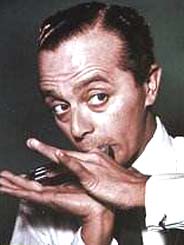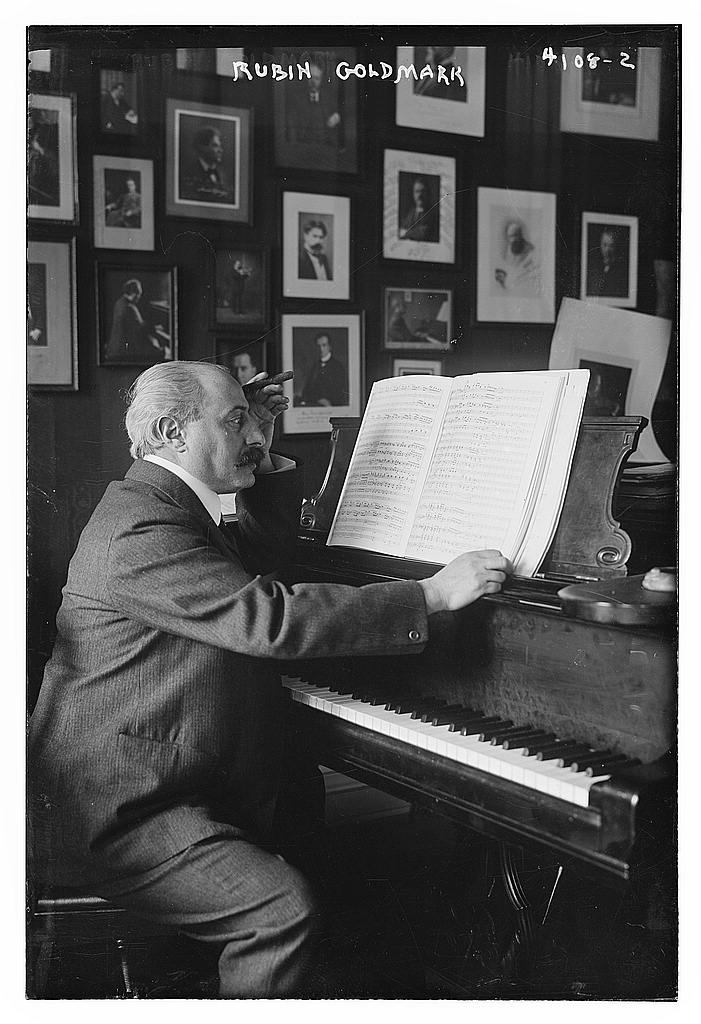"Jazz came to America three
hundred years ago in chains."
AUTHOR: Paul Whiteman
COMPOSER
GERSHWIN

 |
| http://www.simonbielman.com/wp-content/uploads/2011/02/Coffee_Quartet.jpg |
LULLABY
FOR STRING QUARTET
The quartet version was first published in 1968.
Mischa Lefkowitz, Violin
Robin Olsen, Violin
Thomas Hall, Viola
Richard Treat, Cello

.jpg)
LULLABY
FOR STRINGS
Dimitri Kitayenko, Conductor
Moscow Philharmonic Orchestra
 |
| Harry Herman Roseland: The Light of the Home |
LULLABY
A lullaby (cradle song, berceuse)
is a soothing song, usually sung to children
before they go to sleep. The idea is that the
song sung by a familiar and beautiful voice
will lull the child to sleep. Lullabies can be
found in every human culture, often very
ancient. Lullabies written by established
classical composers are often given the form-
name berceuse, which is French
for lullaby, or cradle song.
for lullaby, or cradle song.
 |
| Berthe Morisot: The Cradle |
STRING QUARTET
is music for written for an ensemble of
2 violins, viola, and cello.
It is often also called
chamber music.
chamber music.

LULLABY
FOR STRING QUARTET
A Piece in One Movement
It was in 1923 that Gershwin, having failed
to prepare a harmony exercise for his third
lesson with Rubin Goldmark
(nephew of Hungarian
composer
Karl Goldmark
 |
| Karl Goldmark |
and a pupil of Antonin Dvořák),
 |
| Dvorak |
turned in this composition, written several
years earlier. As Gershwin later told it with
some glee, Goldmark, upon looking at
Lullaby, told the young composer,
"It's plainly to be seen that you have already
learned a great deal of harmony from me!"
This, as it turned out, was Gershwin's last
lesson with that particular teacher.
Lullaby was actually written in 1919 or 1920
as a harmony exercise for Edward Kilenyi.
Gershwin wrote it both as a string quartet and
a piano piece, although as a piano work, it
LULLABY
(Piano Version)
In the months following its
composition it was played as a string
quartet by the composer's friends at private
musicales. But it was not until 1922 that
any of the music was heard publicly.
The occasion was Gershwin's
 |
Blue Monday (Opera a la Afro-American) is
considered to be the first piece of symphonic
jazz, and the first attempt to join classical
music forms with jazz and the African-Harlem.
It is a one-act jazz opera set in Harlem
and based on the story of the opera Pagliacci.
|
which turned the main idea of Lullaby into an
aria entitled "Has Anyone Seen My Joe?"
BLUE MONDAY
(Part 2)
"Has Anyone Seen My Joe?"
(First Song on this video)
Hans Leenders, Conductor
Codarts Vocal and Instrumental Ensemble
For the next forty years,
Lullaby remained unheard except
in revivals of Blue Monday.
In 1962 harmonica virtuoso

mentioned to
Ira Gershwin
that, in recording a
film score, he was going
to overdub himself four times.
The word "four" reminded Ira of Lullaby
and he showed the manuscript to Adler.
On August 29, 1963, Adler premiered his
transcription of the piece for harmonica
and string quartet in an appearance with
the Edinburgh String Quartet at the
Edinburgh Festival. He later recorded
Morton Gould's
arrangement for
harmonica and string
orchestra. On October 29, 1967
Lullaby was finally performed publicly
as Gershwin had written it.
The occasion was a concert by the
Juilliard String Quartet
 |
| The members of the first Juilliard Quartet resident at the Library of Congress, in a 1962 photo, from left: Robert Mann, Isidore Cohen, Claus Adam and Raphael Hillyer - Clemens Kalischer |
at the Library of Congress.
 |
| Library of Congress Building |
As to its place in the Gershwin canon, Ira
Gershwin, upon publication of the
score in 1968, wrote,
"It may not be the Gershwin of Rhapsody in Blue,
Concerto in F, and his other concert works, but
I find it charming and kind."

 |
| Leon-Emile Caille: Her Pride and Joy |
ARTICLES FROM:
LULLABY ANALYSIS
True to its name, the piece moves
slowly and softly, constantly muted
("con sordini") with hypnotic repetition
of beats creating a sense of a gentle
and comfortable ‘swing.’ Delicate
harmonics in the first violin introduce
the limping figure that becomes the
cello’s accompaniment to the step-
wise, chordal theme in the upper
voices. The colorful harmonies and
syncopated rhythms are somewhat
bluesy and suggestive of ragtime.
Changes in texture (higher registers
and different accompaniment) add
interest to the repetitions. A middle
section develops thematic ideas,
keeping the syncopated motion,
except for brief "recitative" solos in
the violin and cello. Even though the
return of the first section is strong
(con fuoco), it soon ends delicately
with harmonics in all voices and
airy pizzicatos.

IRA GERSHWIN,
IN HIS OWN WORDS,
WRITES ABOUT
"LULLABY"
"Sometime in 1919 or 1920 my brother George tried
his hand at a short piece for string quartet and called
it "Lullaby." (Possibly he originally intended it as a
piano solo, in an unfinished manuscript of his I still
have.) As a quartet it was played in the next several
months at a number of private musicales of his many
musician friends before - sometimes after - they'd get
down to the more serious business of classical
quartets and quintets. I attended three of these
intimate sessions and could see and hear that
'Lullaby' was invariably welcomed."
"In 1922 George and lyricist B. G. DeSylva had
practically finished the score for that year's Scandals
when producer George White suddenly decided he
wanted them to go ahead with Blue Monday, a one-
act opera the collaborators had once mentioned they'd
like to do. There were only five days left before the
Scandals rehearsals were to begin, so my brother had
an upright put into his bedroom, and there he and
Buddy holed themselves up until the score was finished.
I can't recall why George borrowed the opening theme
of his string quartet for the beginning of an aria in Blue
Monday. Maybe it was the urgency of the assignment,
or perhaps by then George had Come to regard 'Lullaby'
as merely an exercise. But borrow the opening bars he
did, and that, so far as the composer was concerned,
was the end of the string quartet, as I've no recollection
of his ever mentioning it again."
"Forty years later, in 1962, when Larry Adler, the
harmonica virtuoso, was commissioned to do a film
score, he told me one night he expected to use
harmonicas in some sections of the underscoring:
He'd play all four parts himself and then synchronize
the tapes. The word 'four' suddenly reminded me of
'Lullaby' lying among a number of George's
manuscripts in my upstairs workroom. I showed it
to Larry who asked if he could borrow it. The notion
was that he'd make a transcription for harmonica and
string quartet which he would premiere at the Edinburgh
Festival with the Edinburgh Quartet. On August 29,
1963 their performance was warmly received. Recently,
in a new arrangement by Morton Gould for harmonica
and string orchestra, Gould and Adler included the piece
(called there 'Lullaby Time') in an RCA Victor album
titled Discovery."
"But it was not until October 29, 1967 that 'Lullaby' was
publicly performed as the quartet George had written
nearly half a century earlier. Following Adler and
Gould's interest I had mentioned the composition to
of Congress, and an authority on George's concert work.
Dr. Spivacke felt that the Juilliard String Quartet might
welcome the piece. And indeed after they had given it a
first reading they scheduled it for their October concert at
the Library of Congress, a concert widely broadcast."
"Now 'Lullaby' is published from my brother's manuscript.
It may not be the Gershwin of Rhapsody in Blue,
Concerto in F, and his other concert works,
but I find it charming and kind."
~Ira Gershwin, April 1968~

LINKS
http://redroom.com/member/walter-rimler/blog/gershwins-lullaby-for-string-quartet
 |
| Arthur Rackham: Baby Bunting |
 |
| Jessie Wilcox Smith: Rocking Baby Doll to Sleep |





klimt.jpg)



.jpg)



.jpg)